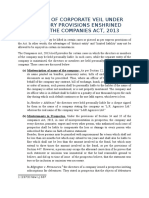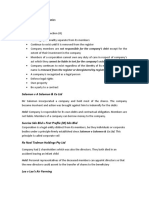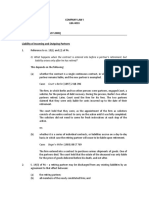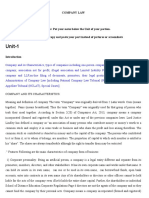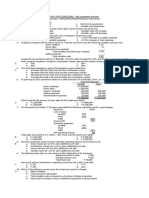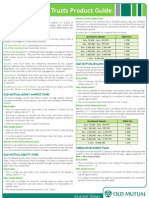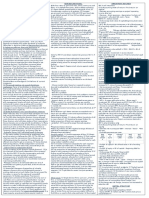0% found this document useful (0 votes)
55 views11 pagesBusiness Law Continuous Assessment
The document discusses partnership law in Malaysia. It addresses whether a partner, Miang, could be held liable for injuries caused by another partner, ComMolot, during a performance. Under the Partnership Act 1961, partners are jointly and severally liable for partnership debts and obligations. However, a partner is not liable for unauthorized acts of other partners. The document analyzes past court cases and concludes that whether Miang is liable depends on the specific facts and Miang's knowledge and control over ComMolot's actions.
Uploaded by
Elly FirahCopyright
© © All Rights Reserved
We take content rights seriously. If you suspect this is your content, claim it here.
Available Formats
Download as PDF, TXT or read online on Scribd
0% found this document useful (0 votes)
55 views11 pagesBusiness Law Continuous Assessment
The document discusses partnership law in Malaysia. It addresses whether a partner, Miang, could be held liable for injuries caused by another partner, ComMolot, during a performance. Under the Partnership Act 1961, partners are jointly and severally liable for partnership debts and obligations. However, a partner is not liable for unauthorized acts of other partners. The document analyzes past court cases and concludes that whether Miang is liable depends on the specific facts and Miang's knowledge and control over ComMolot's actions.
Uploaded by
Elly FirahCopyright
© © All Rights Reserved
We take content rights seriously. If you suspect this is your content, claim it here.
Available Formats
Download as PDF, TXT or read online on Scribd
/ 11




